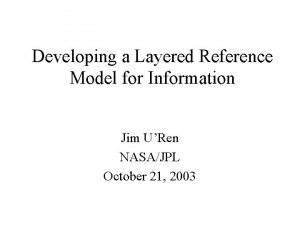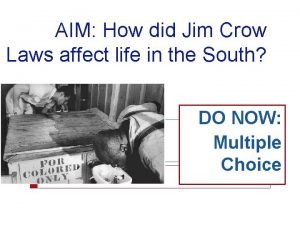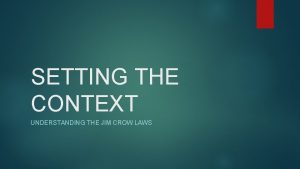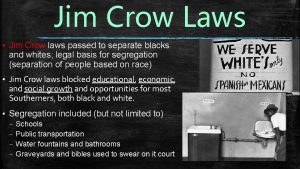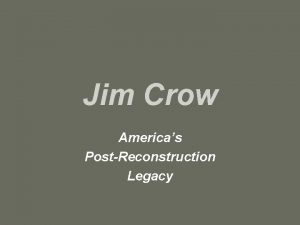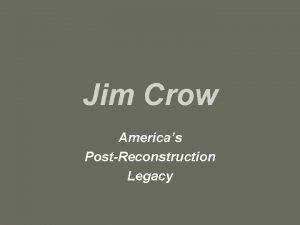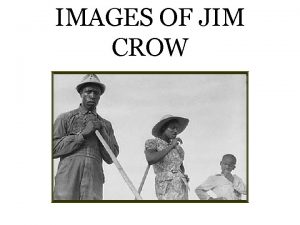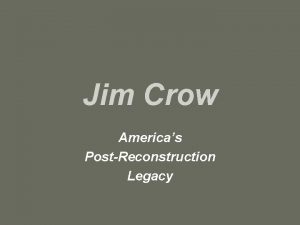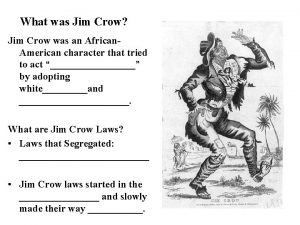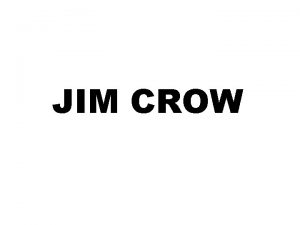Jim Crow Laws What are Jim Crow Laws









- Slides: 9

“Jim Crow” Laws

What are “Jim Crow” Laws • Segregation, or the separation of the races was different in the South. • Jim Crow Laws were racial laws that existed between 1877 -1960 s that enforced discrimination. • African Americans treated as second class citizens and were treated as being inferior to whites.

Examples of “Jim Crow” Laws • A Black male could not try to shake hands with a white male because it implied being socially equal. • A Black male could not offer his hand to a White woman because he risked the chance of being accused of rape.

Examples of “Jim Crow” Laws • African Americans were not allowed to show public affections toward one another in public, especially kissing, because it offended Whites. • They also never lit a cigarette for a white woman because it implied intimacy. • African Americans were called by their first names. However, African Americans had to use courtesy titles when referring to Whites. Ex: Mrs. , Sir, Ma’am.

Jim Crow Guide Rules that African Americans observed when conversing with Whites. 1. Never curse at a White Person 2. Never comment upon the appearance of a White female. 3. Never suggest that a White person is from a inferior (lower) class. 4. Never lay claim to have superior knowledge or intelligence over a White person. 5. Never claim that a White person is lying.

• Jim Crow states severely regulated interactions between the races. Jim Crow signs were placed above water fountains, door entrances and exits, and in front of public facilities. • There were separate hospitals, prisons, churches, cemeteries, public restrooms, and separate public accommodations for Blacks and Whites.

Homer Plessy • In 1892, Plessy was an African American who was arrested for riding in a “whites-only” train car. Plessy, who appeared to be white, was oneeighth African American. His arrest was to show the folly of the Louisiana law that forced him to ride in a separate railroad car. In 1896, the Supreme Court in Plessy vs. Ferguson, upheld the Louisiana Law and set out a new doctrine of “separate but equal” facilities for African Americans.

Impact of “Jim Crow” Laws • The Supreme Court case Plessy vs. Ferguson in 1896 said it was constitutional to have “separate but equal” facilities. • Supreme Court Case Plessy vs. Ferguson gave Jim Crow States a legal way to ignore their constitutional obligations to their black citizens.

Do these appear to be “separate but equal”? White School African American School


